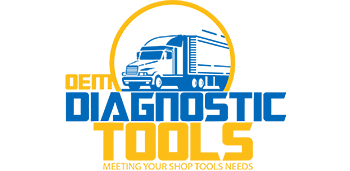Addressing Common Queries on Software Updates As vehicle technology advances, ensuring your diagnostic tools are up-to-date is crucial:
- Why update my diagnostic software? Updates enhance accuracy, introduce new diagnostic capabilities, and ensure compatibility with the latest vehicle models.
Here's a dive into why diagnostic software updates are indispensable in today's automotive industry:
The Importance of Software Updates
1. Compatibility with New Models:
- Manufacturers frequently release new models with updated electronics. Without software updates, your diagnostic tool might not recognize these new systems or components.
2. Improved Diagnostic Accuracy:
- Updates often include refined algorithms or expanded databases that improve the accuracy of fault detection and troubleshooting.
3. Security and Performance:
- Like any software, diagnostic tools can have vulnerabilities. Updates patch these issues, enhancing tool security. Performance enhancements can also make diagnostics faster or more user-friendly.
4. Regulatory Compliance:
- For vehicles, especially commercial ones, staying compliant with emissions regulations or safety standards often requires updated diagnostic software.
Tools and Updates in Practice
Texa Axone Nemo Plus OHW Diagnostic Kit with Multihub
- Features:
- Comprehensive diagnostic coverage for off-highway vehicles, including construction and agricultural machinery.
- Comes with IDC5 software, known for its extensive database and user-friendly interface.
- Supports multiple communication protocols, ensuring it can interface with a wide variety of equipment.
- Update Example:
- This product will need to be updated to IDC6 later this month, which promises to bring enhanced diagnostic capabilities, new vehicle support, and improved user interface features.
Benefits of Regular Software Updates
1. Enhanced Functionality:
- New updates can introduce functionalities like active tests, recalibrations, or new system diagnostics previously unavailable.
2. Access to Latest Technical Information:
- Software updates often include the latest repair procedures, technical bulletins, and wiring diagrams, which are crucial for complex repairs.
3. Better User Experience:
- Updates can improve the tool's interface, making diagnostics more intuitive or adding features like video tutorials or enhanced reporting.
4. Future-Proofing Your Investment:
- By keeping your diagnostic software current, you ensure your tool remains valuable as vehicle technology evolves, protecting your investment over time.
How to Manage Software Updates
- Check Regularly for Updates: Most diagnostic tools have an option to check for updates automatically or manually. Set reminders if needed.
- Update During Downtime: Schedule updates during quieter times to avoid disrupting shop operations, especially if an update process requires you to restart or recalibrate the tool.
- Backup Data: Before updating, ensure any important diagnostic data or custom settings are backed up since updates might reset or change these.
- Understand the Changelog: Review what each update brings. This can help you prioritize updates based on the vehicles you service most often.
- Training: Sometimes, updates come with new features that require learning. Utilize any training materials provided by the manufacturer.
Case for Keeping Tools Updated
Imagine a scenario where a new regulation requires a specific emissions test on all commercial vehicles. Without the latest software update, your diagnostic tool might not perform this test, leading to compliance issues or missed opportunities for revenue through new services.
Or consider a workshop facing a surge in a particular brand of vehicle, only to find their diagnostic tool isn't up to date to handle the new ECU models. This could lead to lost business or the need to purchase or rent another tool, which could have been avoided with regular updates.
The necessity of updating diagnostic software cannot be overstated in an era where vehicle technology evolves rapidly. Tools like the Texa Axone Nemo Plus OHW Diagnostic Kit with Multihub exemplify how updates can significantly enhance diagnostic capabilities, ensuring mechanics and vehicle owners can tackle the latest vehicle issues with confidence. Keeping your diagnostic tools updated is not just about maintenance; it's about staying competitive, compliant, and ahead in the automotive service industry.

